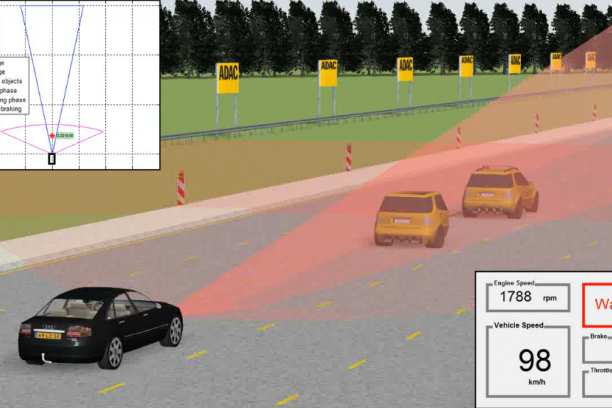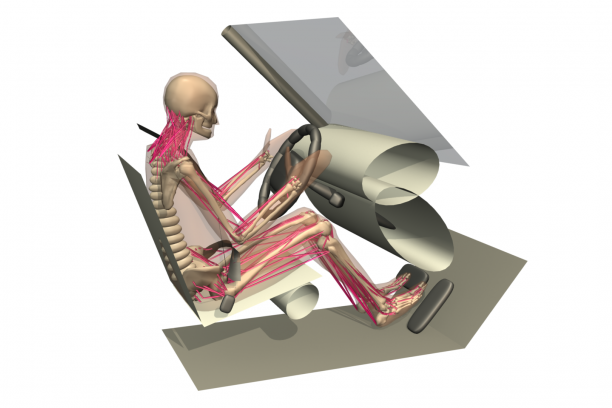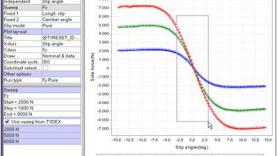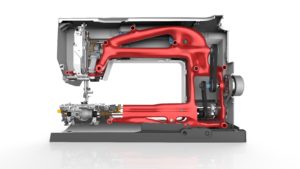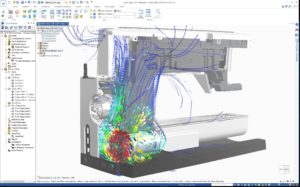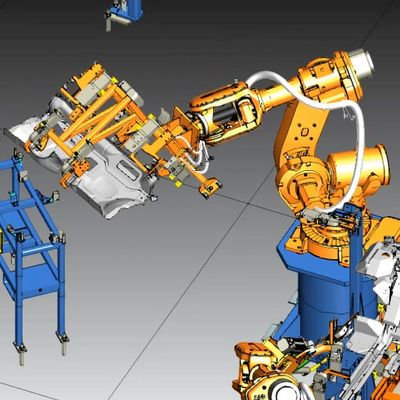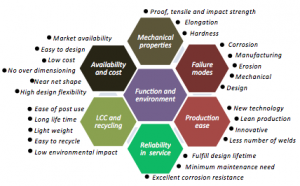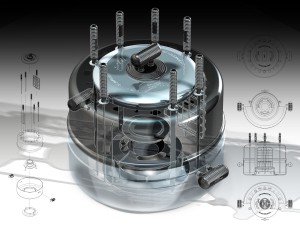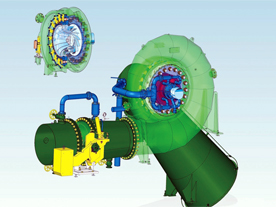Siemens announces the latest version of Simcenter 3D, its flagship environment for multi-disciplinary computer-aided engineering (CAE), with new comprehensive solutions across multiple simulation disciplines. Simcenter 3D is an advanced stand-alone CAE application for analysts and discipline experts that works with data from any CAD source. Because it is built on the Siemens NX platform, it also works seamlessly with NX CAD. With more enhancements than any previous release, Simcenter 3D, part of Siemens’s SimcenterTM portfolio of simulation and test solutions for predictive engineering analytics, looks to revolutionize how simulation engineers can help drive design direction in industries such as automotive, aerospace and industrial machinery.
This latest release provides topology optimization solutions that work seamlessly with Convergent Modeling technology to provide comprehensive generative design workflows. These solutions allow for more accurate motion modeling, and more efficient acoustic and structural dynamics simulations. Simcenter 3D now provides expanded support for general purpose nonlinear solutions based on the NX Nastran multi-step nonlinear solver as well as advanced analysis of composites based on LMS Samtech Samcef software. This latest release also delivers several enhancements to improve industry workflows across a wide range of industries, for modeling connections in large assemblies as well as accurate simulation of flexible pipes and hoses.
“Siemens is executing on the Simcenter strategy it announced last year as evidenced by its ongoing investment in new simulation capabilities along with the accelerated integration of CAE technologies acquired over the past several years. The latest release of Simcenter 3D delivers innovative capabilities for topology optimization applied in the context of generative design and also brings together unique hybrid test/analysis technologies that extend the ability to model and simulate system dynamics for complex applications such as high frequency noise and vibration,” said Donald Tolle, practice director, Simulation-Driven Systems Development at CIMdata. “These product enhancements ensure that Simcenter 3D will continue to be a robust, scalable, and multi-disciplinary CAE environment for simulation and analysis specialists.”
Working seamlessly with NX CAD and Convergent Modeling technology, Simcenter 3D now offers generative design solutions for designers and advanced analysts. For the first time, output from a topology optimization process can be utilized directly in the design process, without the need to recreate geometry. Furthermore, engineers can now work directly with scanned data or an optimized shape to conduct more detailed simulations to ensure performance. By using Simcenter 3D along with HEEDS software for design exploration automation, engineers are able to fully explore the design space and generate innovative designs that meet more stringent design requirements.
New with this release, hybrid modeling allows analysts to incorporate test-based data into their simulation models to achieve better accuracy within the simulation. Other enhancements include support for modeling sub-mechanisms within motion assemblies, faster computation time for analytical contact in motion models, and improved performance for interior and exterior acoustics simulation.
Nonlinear simulation in Simcenter 3D is greatly expanded by leveraging enhancements in NX Nastran and integrating capabilities from the LMS Samcef solver. In addition to the already strong capabilities for simulating nonlinear thermo-mechanical behavior in turbomachinery, Simcenter 3D now offers expanded support for general purpose nonlinear simulation with more elements, greater robustness and algorithms for multi-step nonlinear simulation to provide enhanced realism and faster solution times. Additionally, support for curing simulation of composites now allows prediction of residual stresses and spring-back effects.
Several of the enhancements target industry-specific workflows. Simulation engineers in automotive, aerospace, and heavy machinery companies benefit from the integration of universal connections support, which can help to efficiently build large system models with many connections and solve across several solvers. Simcenter 3D also leverages the LMS Samcef solver for simulation of flexible pipes and hoses which are commonly used in a variety of industries.
“Our Simcenter solutions deliver critical capabilities that help our customers engineer innovation into their products,” said Jan Leuridan, senior vice president for Simulation and Test Solutions, Siemens PLM Software. “With our latest release of Simcenter 3D we are able to integrate multiple technologies from different tools all under one platform. Capitalizing on our deep experience in geometry-based CAE as well as our strength in key disciplines such as structural dynamics, acoustics, motion, and nonlinear analysis, we have enhanced Simcenter 3D to enable more streamlined workflows and a broader set of simulations in support of performance engineering.”
Siemens PLM Software
www.plm.automation.siemens.com/en/products/simcenter/3d/v12/index.shtml

